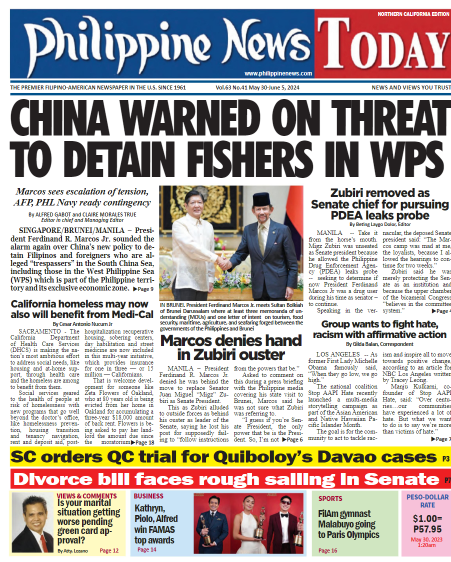SUBIC, Zambales – The Armed Forces of the Philippines (AFP) and the US Indo-Pacific Command (USINDOPACOM) conducted their eighth bilateral maritime cooperative activity (MCA) in the West Philippine Sea as their ships were tailed by two China war ships and a China Coast Guard vessel.
The training activity took place at the strategic waters of Palauig, Zambales to Cabra Island, Occidental Mindoro, AFP chief Gen. Romeo Brawner Jr. said in a statement.
“These maritime engagements demonstrate our commitment to maintaining a free, open, and secure Indo-Pacific. The eighth bilateral MCA reinforces both countries’ shared commitment to upholding international law, freedom of navigation, and regional stability,” Brawner said.
The Philippines deployed its newest warship, the BRP Miguel Malvar (FFG-06), in the military drills with the United States in the West Philippine Sea, amid China’s continued presence and intimidation in the tense waters.
The BRP Miguel Malvar — a 118.4-meter-long guided-missile frigate — also conducted formation exercises with the US Navy’s USS Curtis Wilbur and two Philippine Coast Guard vessels, highlighting a show of unity and strength among the allied forces at sea.
The formations are used during combat missions.
Also participating were Philippine Navy assets were an AW-109 helicopter, a C-208B aircraft, and a Philippine Air Force search-and-rescue aircraft.
Meanwhile, the Philippine Coast Guard (PCG) deployed patrol vessels BRP Cabra (MRRV-4409) and BRP Suluan (MRRV-4406).
The US side, meanwhile, was represented by the USS Curtis Wilbur (DDG-54) and a P-8A “Poseidon” maritime patrol aircraft.
The eighth MCA featured a range of operational drills and cooperative maneuvers. These included a communications exercise to test coordination protocols, followed by maritime domain awareness and contact reporting.
The PCG also conducted a visit, board, search, and seizure (VBSS) operation to demonstrate law enforcement interoperability at sea.
Further exercises involved division tactics and officer of the watch maneuvers, which allowed both navies to practice coordinated ship movements and formation sailing. A photo exercise followed by a finish exercise that integrated all learned skills in a simulated scenario.


















